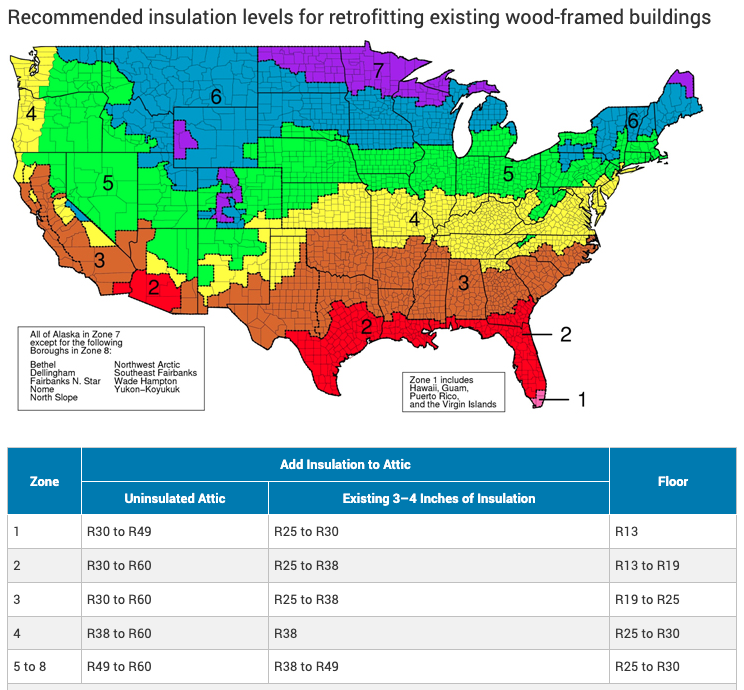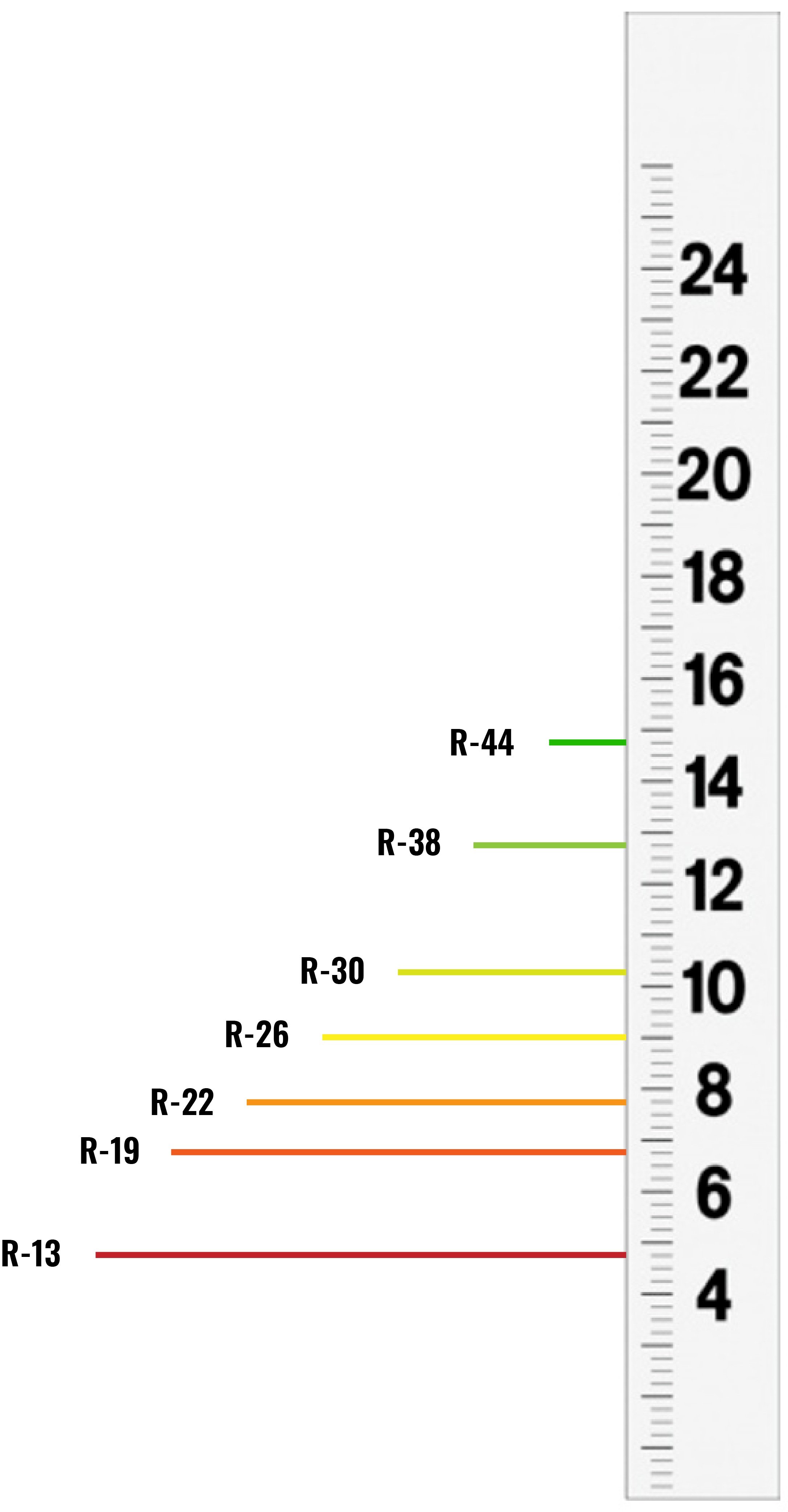How Much Attic Insulation Should I have?
Wether it’s hot or cold outside, your attic insulation levels can dramatically impact your energy consumption, and the overall comfort of your home. We wanted to share a quick resource that can help you to determine what your current attic insulation level is, and a rough R-value for your current depth. It’s quick and easy, all you need is access to your attic, and a ruler or tape measure to check your insulation depth.
We also would like to preface this by saying that our service area in Missouri falls under Zone 4 - and typical code requirements ask that attic insulation levels be at an R38, however some municipalities may differ slightly. It’s always best to refer to local code requirements, and it’s okay to have more than what code requires.
Recommended insulation levels for retrofitting existing wood-framed buildings by climate zone.
Diagram illustrating attic insulation depth and its correlation with R-value for energy efficiency.
How to check the depth of your attic Insulation
Locate your attic access
There are several places for attic access, most commonly we see drop-down attic ladders in garages. Some homes may just have an access hole in the ceiling that would require a ladder to enter. There are also homes where the access may be in closets, or other places.
Determine your Attic insulation Type
The most common attic insulation material type in our service area is fiberglass. Fiberglass insulation can be many different colors (pink, yellow, white) but should be easy to identify. The other insulation materials that are a little more uncommon in our area are cellulose, and spray foam insulation.
Check The Depth of Insulation In Attic
Once you’ve identified your attic insulation type, you can quickly and easily measure the depth. It’s best to get a couple of measurements in different spots and average them. Be careful in your attic when measuring so that you don’t step through your ceilings drywall.
Determine your current R-value
Now that you’ve measured your insulation depth, you can reference the image below to see what your approximate R-value is. For example, if you measured your fiberglass insulation to be 9” deep, your current attic insulation R-value would be an R-26 and would require an additional 3.5” of insulation at minimum throughout just to meet the R-38 code.
The image below is for Fiberglass insulation only. For cellulose insulated attics, the process is similar but you’ll just multiply your depth by 3.5 and that should give you an approximate R-value.
Figure the amount of insulation you need to add
If you’re wanting to reach an R38 (12.75” deep) and you have an R26 (9” deep), you need to add an additional 3.75” of insulation to your attic.
Of course, if you’d like a professional opinion, or would like to request an estimate to insulate your attic, we’d be happy to help and will supply you with a free estimate to get your attic insulation back on track.
How Much Attic Insulation Do I Need?
If you’ve found yourself asking “how much insulation do I need in my attic?” we’re here to help. Determining the right amount of attic insulation is crucial for maintaining a comfortable and energy-efficient home. The required insulation level can vary based on factors like your location, climate, and the type of insulation you choose. At insulUSA, we're here to guide you through this process. Our experts can assess your specific needs and recommend the ideal insulation thickness and type to achieve optimal energy savings and year-round comfort. With the right attic insulation, you'll not only lower your utility bills but also contribute to a greener, more sustainable future. Let us help you find the perfect insulation solution for your home.
Recommended Insulation for Attic
We get asked this question almost daily. The answer is simply dependent upon your budget, energy efficiency goals, and current insulation. Of course, each insulation product has its own pros and cons, but the reality is - most attics in the Southwest Missouri area where we’re located utilize blown-in fiberglass insulation and that tends to be the most popular option. However, if you’re looking to maximize efficiency, installing spray foam insulation in your attic is an excellent choice.


